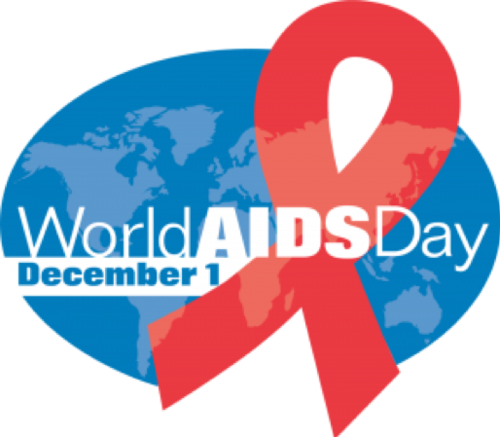World AIDS Day 2018: Progress Continues, Disparities Remain
November 2018
By Kim Rodgers, Communications Specialist, National Association of County and City Health Officials

World AIDS Day, observed annually on December 1, provides the opportunity to highlight our accomplishments, remember those who have lost their lives to HIV and AIDS, and refocus our efforts on what still needs to be done to end the epidemic. Local health departments are in the forefront of these efforts, working on initiatives to address the prevention and treatment of HIV and AIDS and support work towards a cure.
HIV in the U.S.: Progress Continues, Disparities Remain
More than 1.1 million people are estimated to be living with HIV in the U.S., but advances in testing technologies and biomedical interventions have expanded and transformed the way we approach HIV prevention and care. Pre-exposure prophylaxis (PrEP), as well as post-exposure prophylaxis (PEP), are critical interventions to decrease the risk of HIV transmission, and antiretroviral therapy (ART) significantly extends and improves the quality of life for people living with HIV. Further, we have conclusive scientific evidence that “Undetectable = Untransmittable” (U=U), meaning that people living with HIV who are on ART and virologically suppressed do not sexually transmit HIV. Over the past decade, the annual number of new HIV infections has declined, indicating that prevention efforts are working. Nonetheless, significant challenges remain.
One in seven people living with HIV in the U.S. are unaware of their status, representing a critical challenge to ending the epidemic. This year’s World AIDS Day theme, “Know Your Status,” aims to address this by encouraging people to get tested and, in the event of a positive diagnosis, engage in care. Local public health efforts are integral to increasing access to HIV testing and linking individuals to HIV care (if positive) or HIV prevention services (if negative). They are also leaders in broader efforts to fight stigma and address the root causes of health inequities and structural barriers to effective HIV prevention and care.

These local efforts are critical to address disparities in the impact and reach of the epidemic. The latest data from the Centers for Disease Control and Prevention (CDC) shows that progress in the HIV epidemic is uneven across populations and regions. Black populations continue to have the highest rate of diagnoses, accounting for nearly half (44%), despite representing just 12% of the U.S. population. Men who have sex with men (MSM) remain most affected overall, representing two-thirds (67%) of new diagnoses in 2016. However, white MSM are seeing decreases (10%) in HIV diagnoses, while black and Latino MSM have experienced increases of 4% and 14%, respectively. An alarming analysis by the CDC suggests that if current HIV diagnosis rates persist, one in two black MSM and one in four Latino MSM will be diagnosed with HIV in their lifetime.

Youth (ages 13-24) make up 20% of all new HIV diagnoses and are the least likely of any age group to be linked to care in a timely manner. Nearly one in ten new HIV diagnoses are among people who inject drugs, and over the past few years, we have seen HIV outbreaks in places including Scott County, Indiana and Lowell, Massachusetts connected to increased injection drug use fueled by the opioid epidemic. Southern states account for more than half of new HIV diagnoses and 44% of all people living with HIV, while making up 38% of the national population. Health disparities are pervasive throughout the country, but are particularly heightened in the South.
The Critical Role of Local Health Departments
Local health departments are key leaders in providing and assuring access to HIV prevention, care, and treatment for the communities they serve. They are also on the front lines of addressing the co-occurrence of sexually transmitted infections, viral hepatitis, tuberculosis, and opioid use disorder. As community health strategists, local health departments facilitate collaboration among public health, healthcare, social services, and community organizations, among others, to achieve more integrated and effective systems for HIV prevention and care. They are uniquely positioned to increase the impact of efforts to reduce HIV by providing data, contributing expertise, and collaborating with community partners to support evidence-based and culturally competent interventions and clinical services.

This work at the local level is an important contributor to progress towards achieving the goals of the National HIV/AIDS Strategy and ending the HIV epidemic in the U.S. The National Association of County and City Health Officials (NACCHO) works closely with its members to support the achievement of its national goals. For example, NACCHO’s Southern Initiative seeks to improve HIV outcomes among minority populations in the South through use of community health workers. Projects in rural areas of Kentucky, Virginia, and West Virginia are increasing local capacity to respond to the infectious disease consequences of the opioid epidemic and offer comprehensive harm reduction programs to address the needs of people who inject drugs. NACCHO recently completed an action planning project focused on building local health department capacity to collaborate with schools and other key stakeholders to implement school-based prevention programs that reduce HIV and other sexually transmitted infections among adolescents. This year, NACCHO also signed the U=U Consensus Statement, updated its HIV Prevention, Care, and Treatment policy statement, published the findings of a survey about PrEP implementation among LHDs, and presented findings from an evaluation of local implementation of Health is Power, a campaign to promote sexual health among heterosexual black men ages 18-30.
We have the tools to end the HIV epidemic, but local public health needs the support of Congress, through investments and legislation, to be able to use those tools most effectively. Local health departments need sustained investments in comprehensive HIV prevention and care services that are affordable and accessible to all people, especially those in disproportionately affected populations. Equally as important are policy changes that decrease barriers to the implementation of such services, including the removal of all restrictions on federal funding for syringe service programs. Further, it is essential that the Affordable Care Act be protected, as it has allowed tens of thousands of people living with and vulnerable to HIV to access comprehensive, affordable coverage for the first time.
Through the leadership, commitment, and impact of local health departments, alongside people living with HIV and other community members and partners at the local, state, national, and federal levels, we can end this epidemic. To learn more about NACCHO’s work to reduce HIV across the nation, visit our HIV, STI, and Viral Hepatitis webpage, view the results of our recently published pre-exposure prophylaxis implementation survey, and read our updated HIV policy statement.